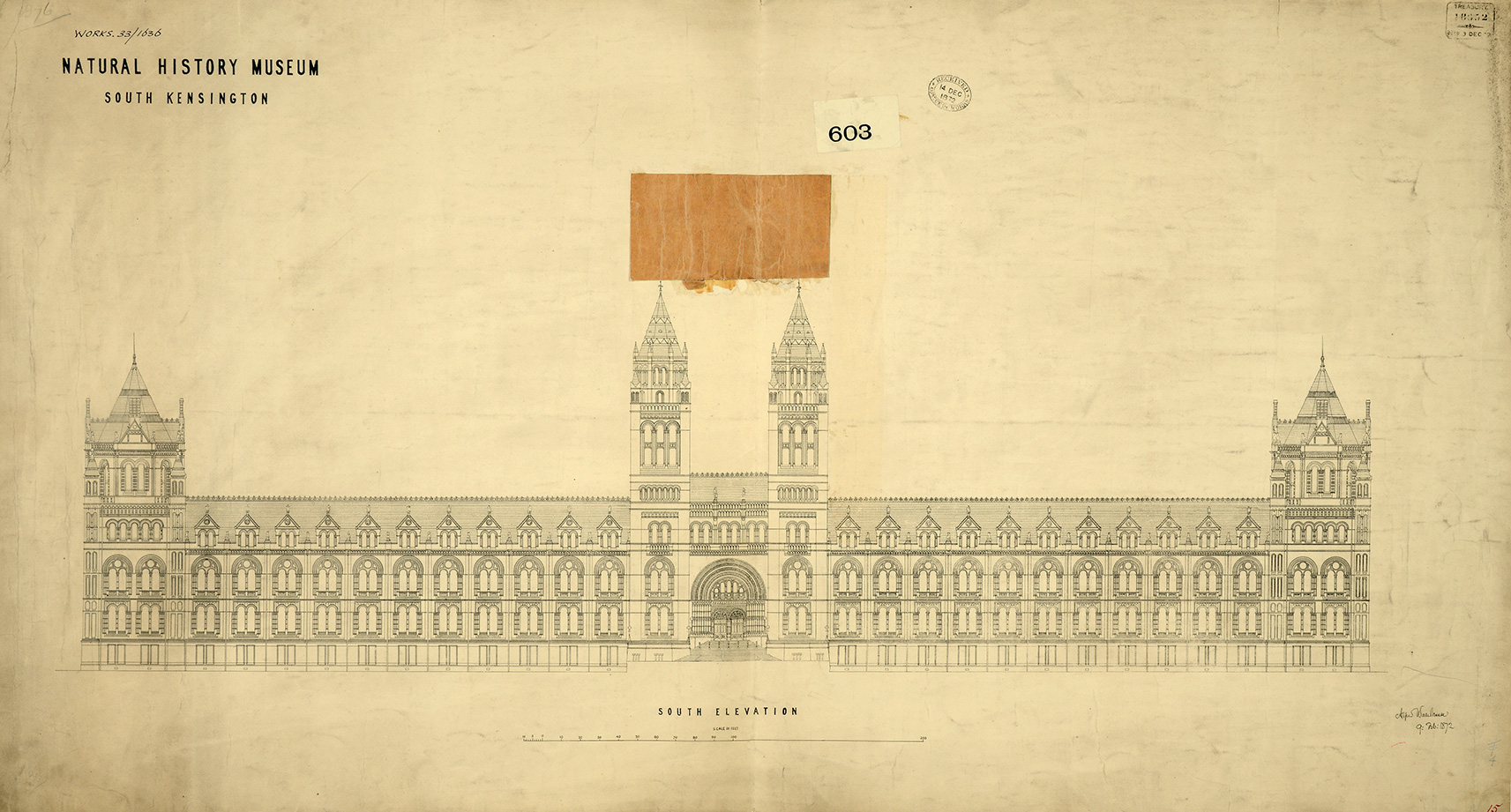
The Natural History Museum houses an amazing collection of over 80 million specimens. These include dinosaur fossils, meteorites, moon rock and preserved animals. Originally the collection was part of the British Museum. By the 1860s the collection had become too large and needed its own space. Richard Owen, the person in charge of the collection, wanted to build a new museum for it. He wanted it to be a ‘cathedral to nature’. The architect Alfred Waterhouse designed the Natural History Museum in a mixture of styles; Gothic Revival style and Romanesque. Work on the new museum began in 1873.
Gothic Revival was a style of building that looked to the past, to the great Gothic churches of the middle ages, for inspiration. Gothic revival buildings were highly decorated with lots of pointed arches and large stained-glass windows.
Romanesque style looked back to ancient Rome for inspiration. Romanesque buildings included lots of rounded arches and symmetrical designs.
Look carefully at the document showing the Natural History Museum.
Fascinating Fact:
There are creatures and plants carved all over the building both inside and out. The idea is to create a feeling of endless variety. The grand central hall at The Natural History Museum has 78 monkeys carved into just three arches.
- Can you spot Alfred Waterhouse’s signature on this design? Do you have a signature? What might you put your signature on? Why do you think Alfred Waterhouse signed his sketch? Why might he have put the date?
- Can you spot any sculptures of animals or birds on the design? You might like to find close up images of some of the creatures used to decorate the building.
- Can you work out what parts of the design are Gothic Revival in style?
- Can you work out what parts of the design are Romanesque in style?
- If you were designing a new museum of natural history, what creatures would you use to decorate the building?
